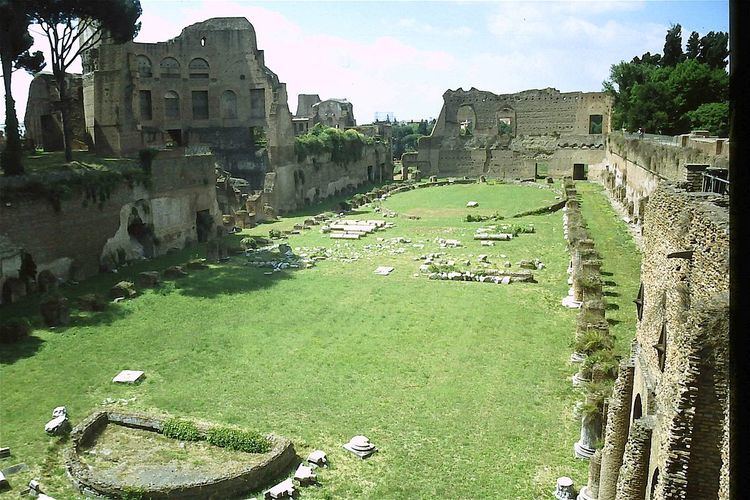 | ||
The Palace of Domitian (or Flavian Palace as other Flavian emperors also had a hand in its construction) sits atop the Palatine Hill, and was built as Domitian's imperial palace. Designed by the architect, Rabirius, the Palace is a massive three-part structure, separated to allow business matters and private life to be conducted in parallel. The modern names used for these parts are:
Contents
The structure is near the House of Augustus and the Republican House of the Griffins.
The palace remained the official residence of the emperors until the end of the Empire.
Domus Flavia
The Domus Flavia is the public wing which has three vaulted halls facing the Forum Romanum. Of the three halls, two are basilicas and the other an aula regia (audience hall). Domitian was able to look upon his visitors from a vaulted apse above. This architectural detail was repeated in the Temples of Venus Genetrix and the Mars Ultor in the Fora of Caesar and Augustus.
Domus Augustana
The Domus Augustana was believed to be the private wing.
The Garden or "stadium"
The so-called "Hippodrome" or "Stadium" of Domitian (160 x 48 m) extends over the entire eastern side of the Domus Augustana. It has the appearance of a Roman Circus but is too small to accommodate chariots.
It was in reality a sunken garden and most of the statuary in the nearby Palatine museum comes from the Stadium. Domitian liked this form of garden as shown by the one he also built at his country villa in the Alban Hills.
The Stadium was the last section of the palace to be built after the first two were completed in 92 AD.
On the eastern side is a large semi-circular exedra on 3 levels which was decorated with sculptures and fountains and commanded views of the garden below, with a belvedere on the top of its concrete dome. Around the perimeter ran a two-storey portico carried on slender columns veneered in expensive coloured marble, the lower level of which was a sheltered promenade and with an elaborate stuccoed roof vault. Hadrian reinforced the structure of the porticos.
The exedra was reduced to a quarter circle externally when the adjacent Severan baths were built. Later (early 4th c. AD) an elliptical private amphitheatre was inserted at the SW end of the garden.
